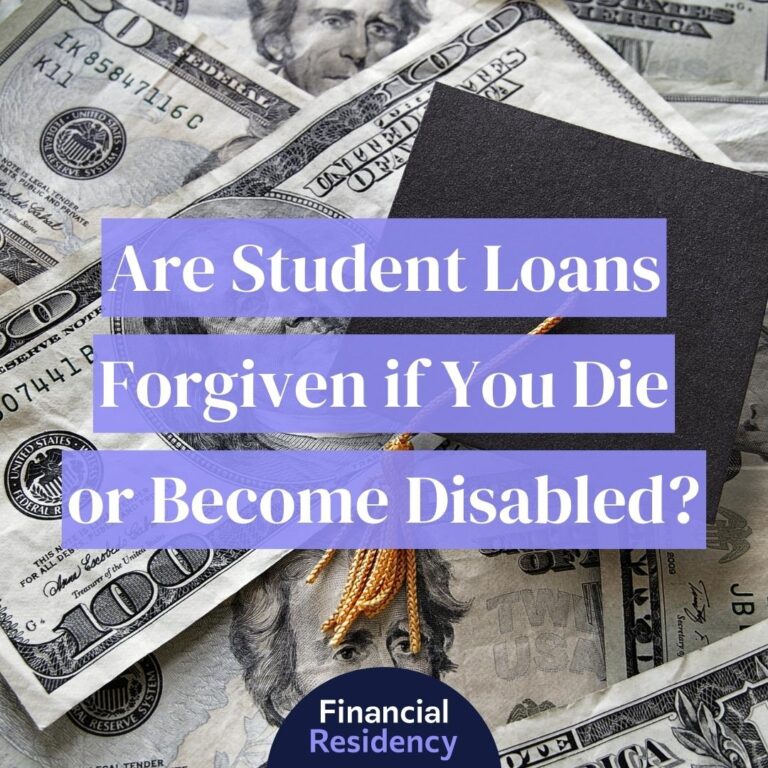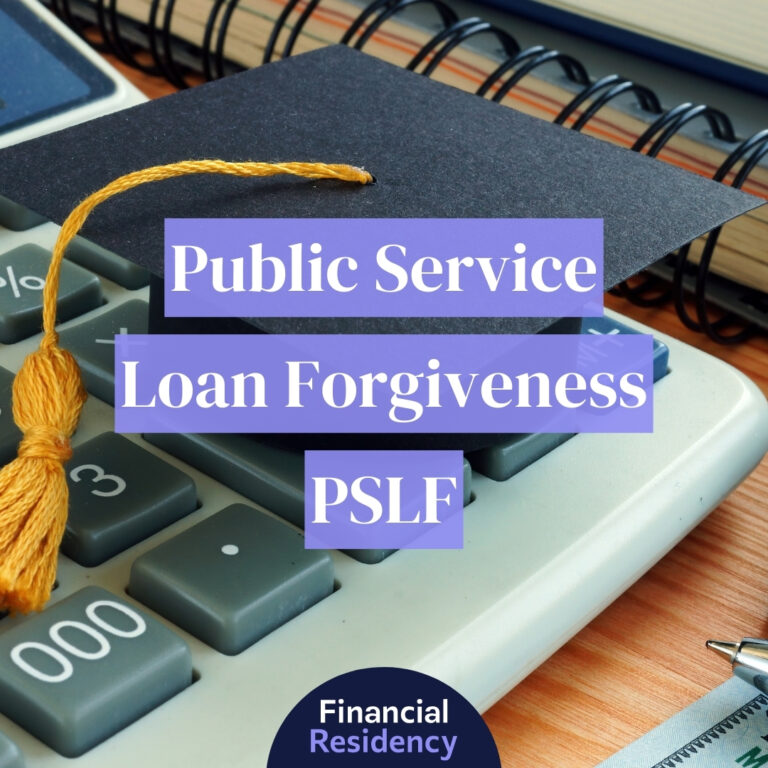Don’t let a high-stressful experience be an excuse for making these student loan mistakes in residency.
When a physician starts residency, the workload makes it difficult to prioritize responsibilities. As a result, social  relationships and personal health tend to be the first casualties. Even in an industry that facilitates a higher quality of life for others, young doctors can often find themselves less healthy and less happy than the patients they treat.
relationships and personal health tend to be the first casualties. Even in an industry that facilitates a higher quality of life for others, young doctors can often find themselves less healthy and less happy than the patients they treat.
Unfortunately, those aren’t the only things that fall by the wayside.
Under stress and distracted residents often make mistakes with their student loan repayment strategy that cost them thousands – or in the case of Public Service Loan Forgiveness eligibility, tens or even hundreds of thousands. During a time where most physicians are just starting to get their financial life in order, that’s money most can’t afford to give up.
It’s understandable, but these missteps are often easily avoided with a little foresight. If you’re a physician in residency, here are some of the most common mistakes you or your peers might be making – and how to avoid them.
Mistake #1: Not consolidating medical school loans
Not all student loans are eligible for PSLF. Private loans are never eligible, and not all federal loans qualify automatically.
Direct federal loans instantly count toward PSLF, but Federal Family Education Loan (FFEL) and Perkins loans have to be consolidated in order to count. If you have FFEL loans and work for a non-profit for 10 years, your loans will not be forgiven. You have to consolidate them through the federal government in order for your payments to start counting toward PSLF.
Borrowers often have a mix of FFEL, Direct and Perkins loans. If that applies to your situation, keep your Direct loans separate when you consolidate if you’ve already started making progress on PSLF.
You can only consolidate through the federal government for your loans to be authorized for PSLF. If you consolidate through a company like LendKey or SoFi, for example, you’ll have instantly ruined your chances for loan forgiveness.
Log on to your student loan account to see what kind of loans you have. If you see “Direct” next to the name of the loan, you’re already set for PSLF. If you don’t see the word “Direct,” call your student loan servicer and ask them what kind of loan it is.
Mistake #2: Going Into Forbearance
Forbearance is like a hall pass given by the federal government to borrowers who are unable to make payments on their student loans. It’s a temporary phase, lasting 12 months at a time, and you have to request it manually.
Many residents opt for forbearance because they feel like they can’t afford to make payments while still making ends meet on a resident’s salary. That’s why income-based payment plans are the perfect option. If you apply for income-based plans before you start working, it’s entirely possible to end up with a $0 monthly payment. That $0 payment will still count toward PSLF, but your months spent in forbearance won’t.
Income-based repayment plans are recalculated every year based on family size, location, and adjusted gross income. A resident with an AGI of $50,000 a year in Nevada would pay $266 a month under one of the income-based repayment plans. Even a lowly resident can afford that.
Mistake #3: Not submitting PSLF certification form annually
On the Department of Education website, there’s a place to fill out the PSLF certification form. The form asks for your contact information and where you worked during the past year. Your employer also has to fill out a portion certifying that you’re an employee.
Once you submit the form, the department will notify you if it’s been certified or if they need more information. If they authorize your form, you’ll also find out how many payments you’ve made that count toward PSLF.
Not filling out the form every year is like playing Russian Roulette. Sure, you could wait until the 10-year mark, send it on with your record of employment for the past decade and wait for your balance to be forgiven – but waiting that long could lead to some surprising results, like discovering that your loans weren’t eligible to be forgiven or that your employer wasn’t actually a non-profit.
This past October, thousands of PSLF hopefuls found themselves in that position as the first round of applicants became eligible for loan forgiveness. Hordes of borrowers suddenly found out they’d rendered themselves ineligible in one way or another – in some cases, discovering they’d never been eligible in the first place. In other words, it’s much better to send in the form every year, ensuring that you’re on the right track for PSLF.
Set a calendar reminder to send in the PSLF form once a year. It doesn’t take that long to fill out and can save you from a lot of unnecessary stress.
Mistake #4: Picking the wrong repayment option to maximize PSLF
While pursuing PSLF, borrowers have the option of choosing any repayment plan available. But to maximize savings, you should choose an income-based plan, which is calculated by taking your annual income, family size, and location into account.
The income-based plans all differ, with some only counting your spouse’s income if you file taxes jointly. Discretionary income under Income-Based Repayment, Pay As You Earn and Revised Pay As You Earn is defined as the difference between your adjusted gross income and 150% of the poverty guidelines. Income-Contingent Repayment counts discretionary income as the difference between your adjusted gross income and 100% of the poverty guidelines.
Choosing the right repayment method is key, as picking the wrong one could lead to unnecessarily overpaying on your student loans. A resident making $47,000 a year in Louisiana with $250,000 in debt would pay the least under the REPAYE, PAYE or IBR plans – $42,746 in total.
Under the ICR plan, that figure would more than double to $98,921. Unsure which plan is best for you? Check out the student loan repayment estimator from the Department of Education and call your loan servicer if you have any questions.
Mistake #5: Refinancing during residency
Student loan refinancing companies have skyrocketed in the past year, and more borrowers are refinancing their student loans and saving thousands on interest.
Doctors are normally great candidates for refinancing, even those just beginning residency. Lenders like their high-income potential and job stability, even if they often carry a heavy student loan burden.
But refinancing is only available through private, not public companies. When you refinance your federal student loans, they’re no longer eligible for PSLF. Refinancing is irreversible, so going this route would essentially end any hopes of using PSLF to pay off your loans.
Before you get distracted by the cost savings of refinancing, do the math on how much you’ll save by choosing PSLF and sticking with your original loans. Sure, your interest rate will be higher – but isn’t that worth it to save hundreds of thousands of dollars?
A resident making $50,000 a year with $400,000 in student loans at 10% interest would pay $42,746 total under the REPAYE plan. After 120 months of payments, their loan balance of $523,730 would be forgiven.
If they chose to refinance their loan for a 10-year term at 4.5% interest, they would pay $497,520 total. They would save $136,859 on interest but pay over $450,000 more than if they had chosen the PSLF route.
Did you enjoy this blog? You’ll really like this one: Everything You Need To Know About Income Based Repayment



